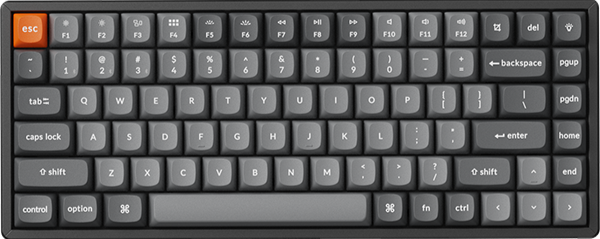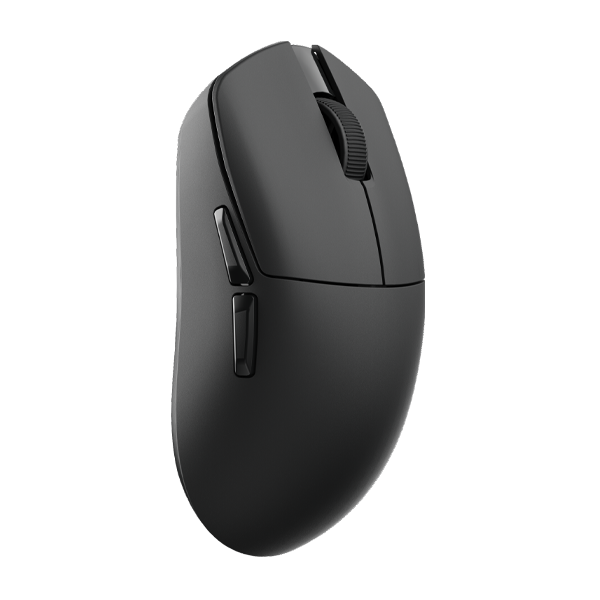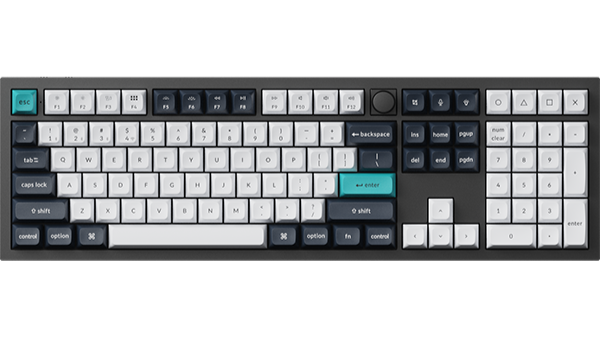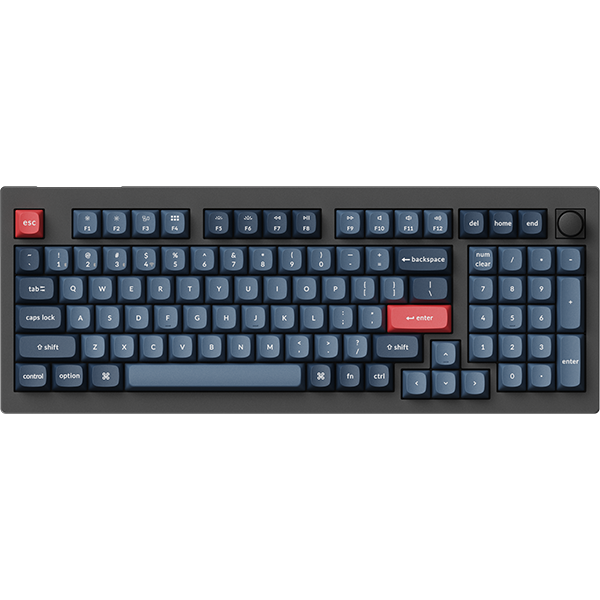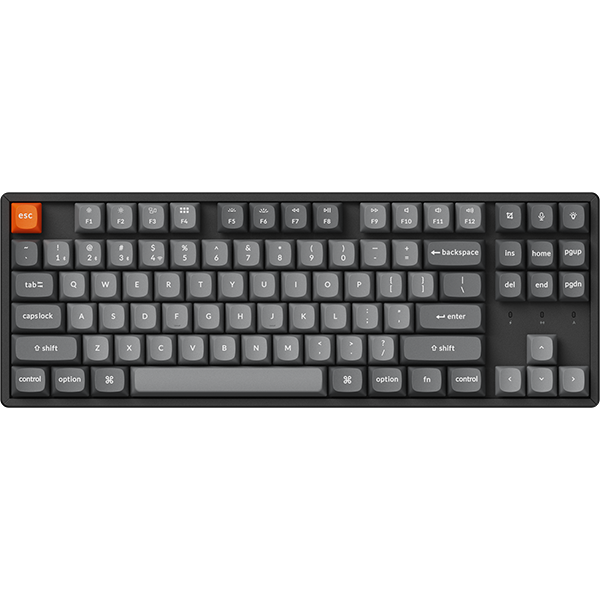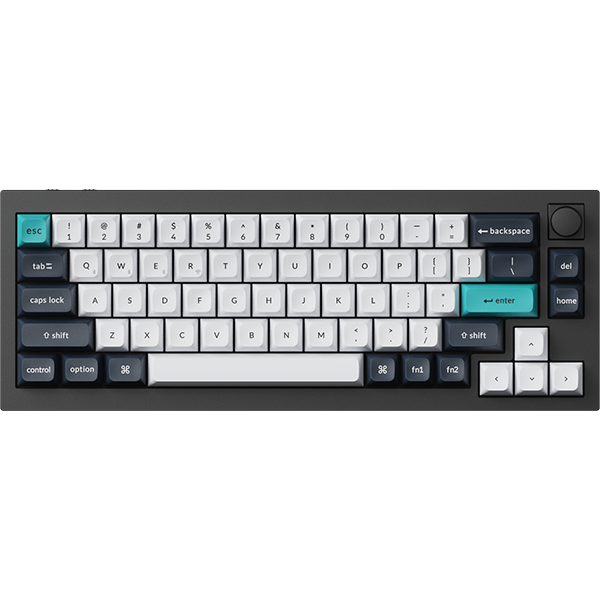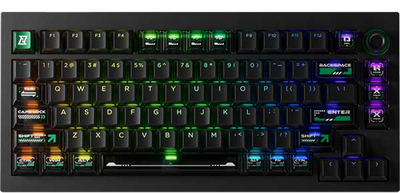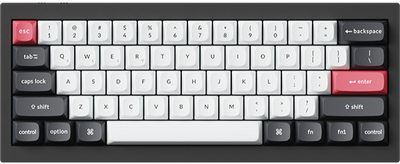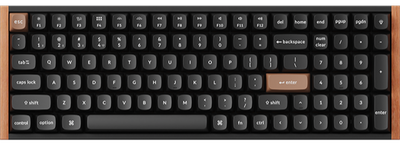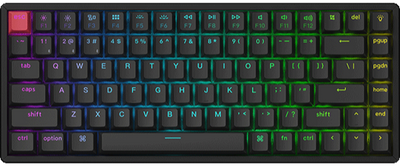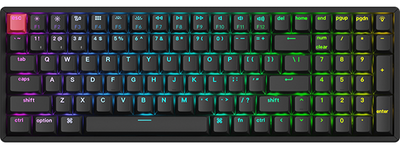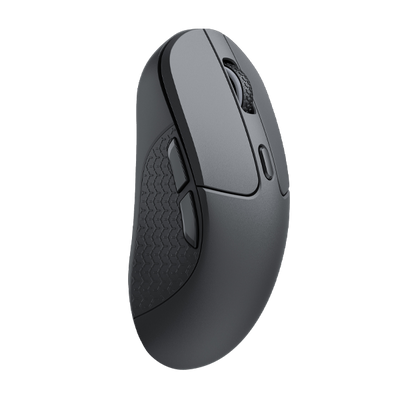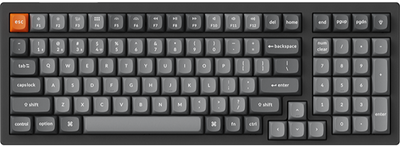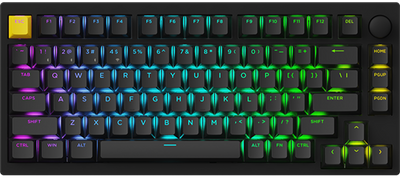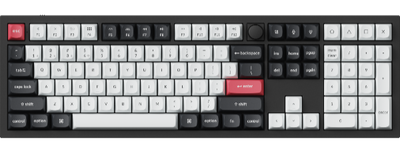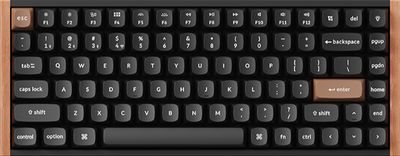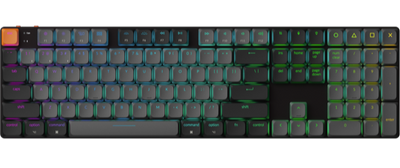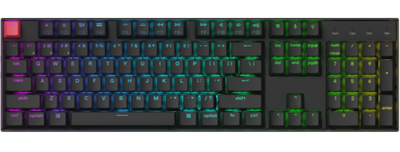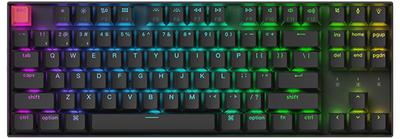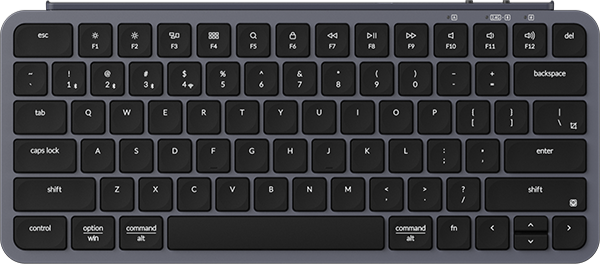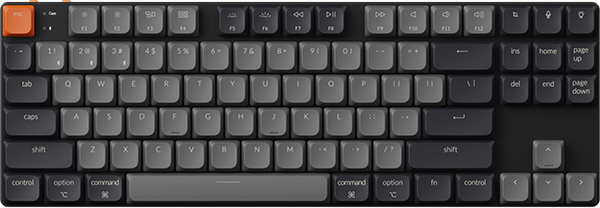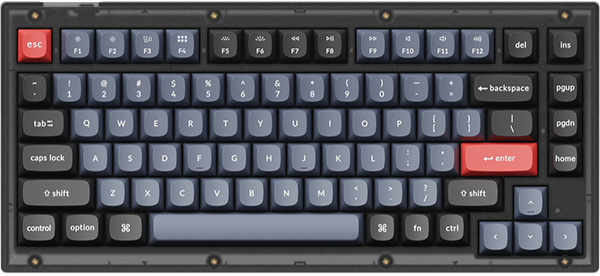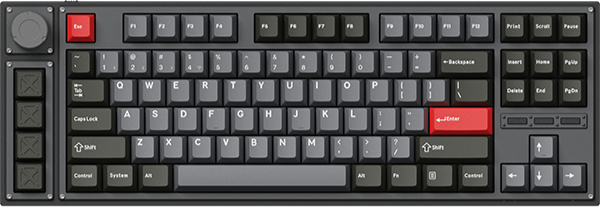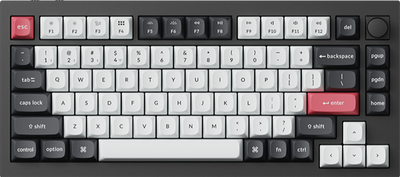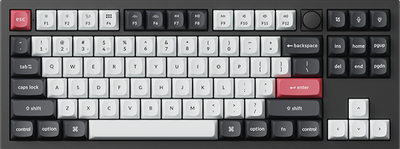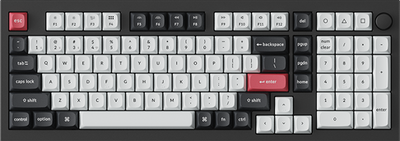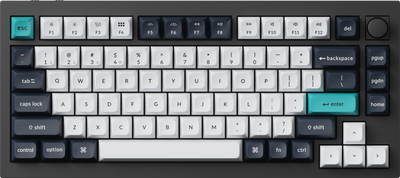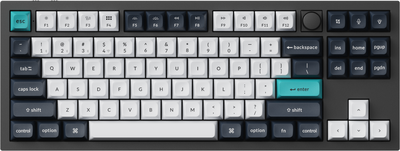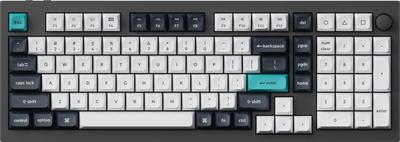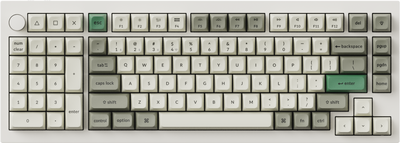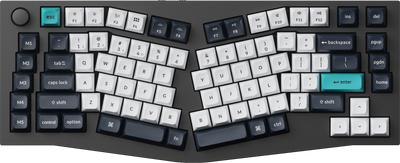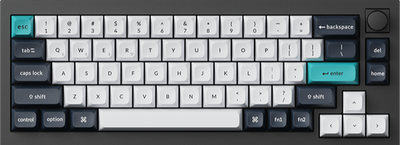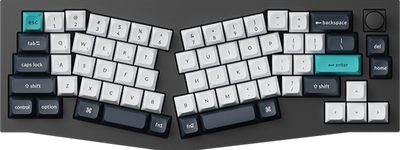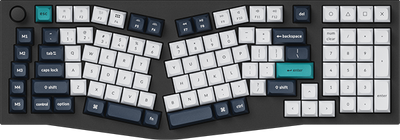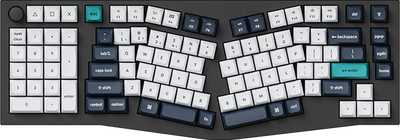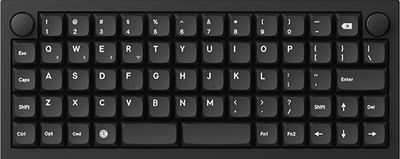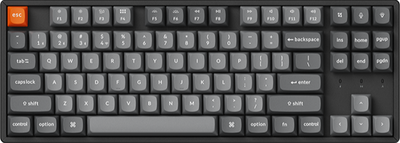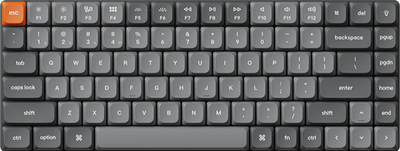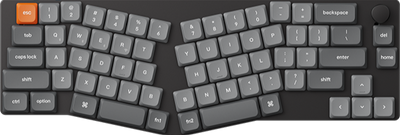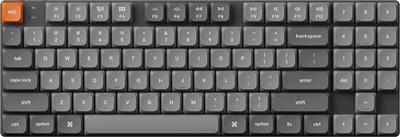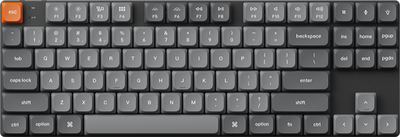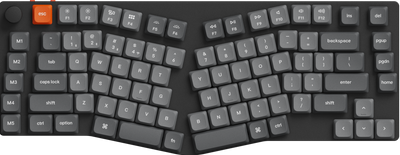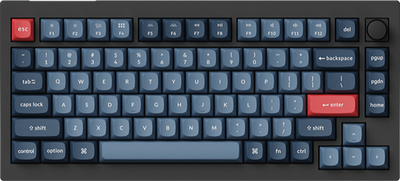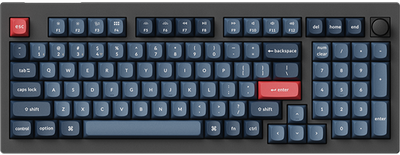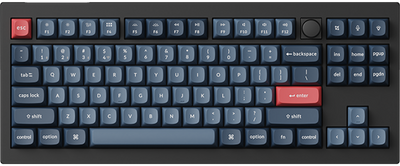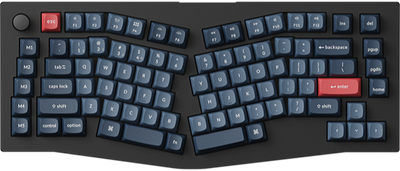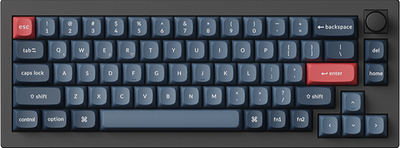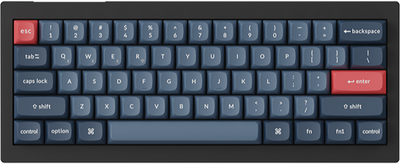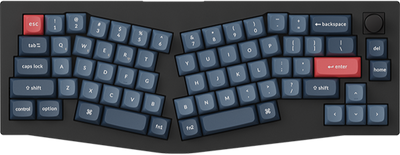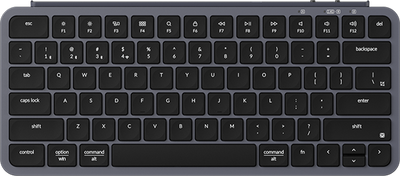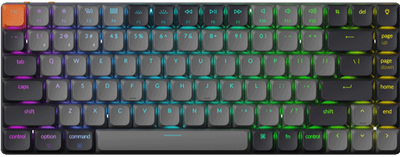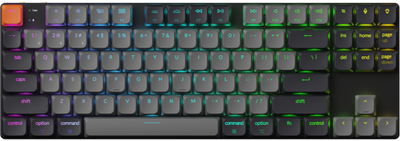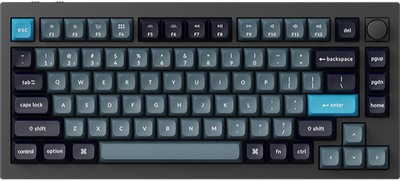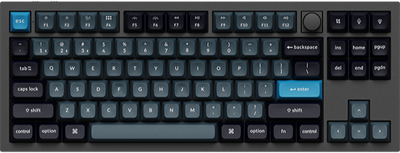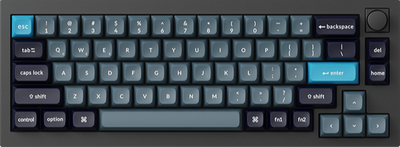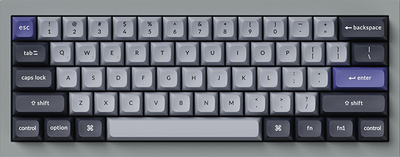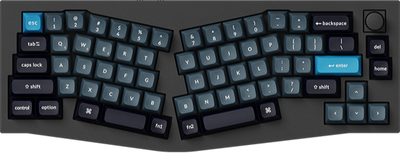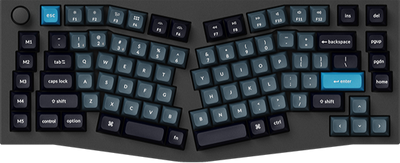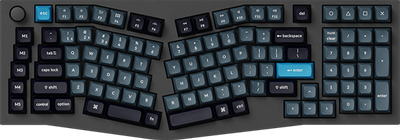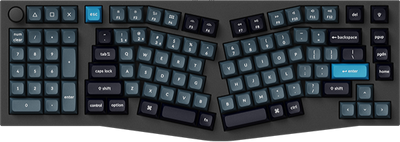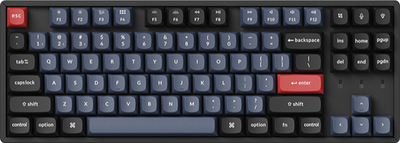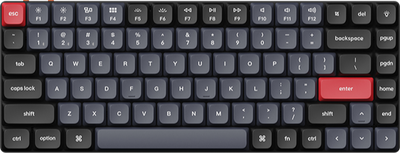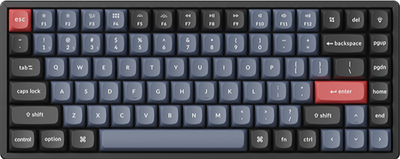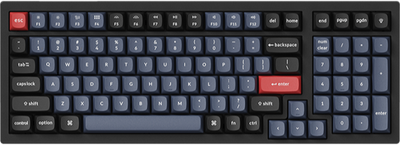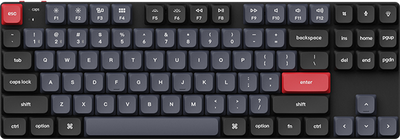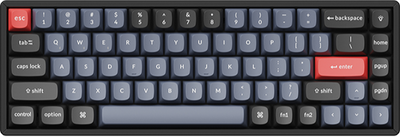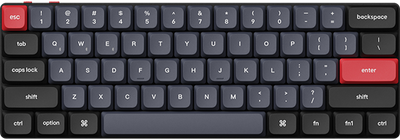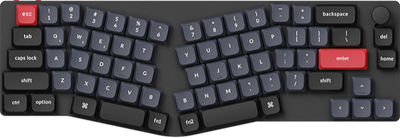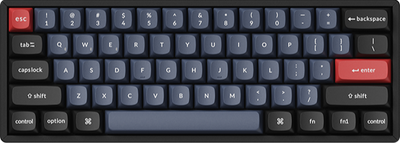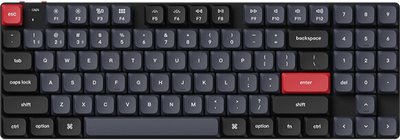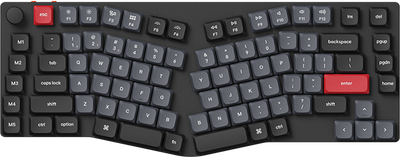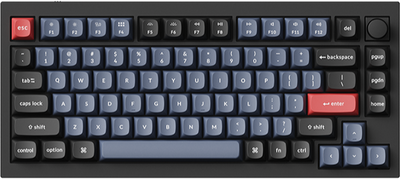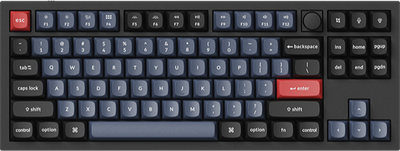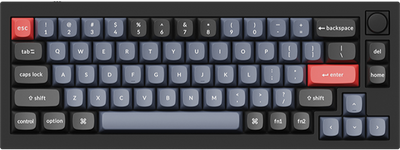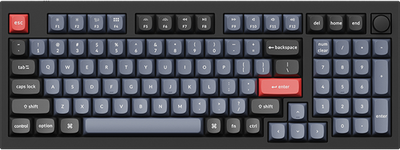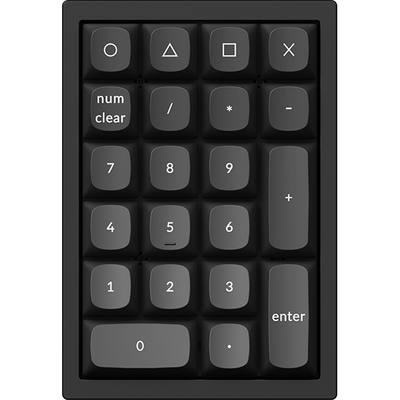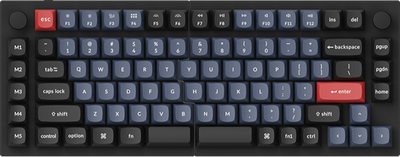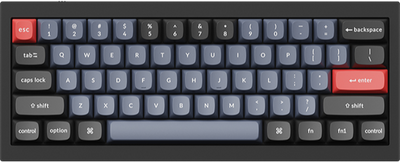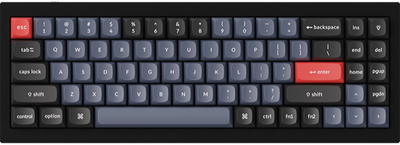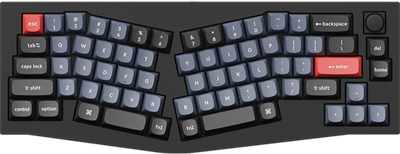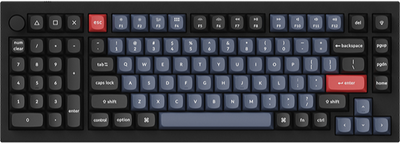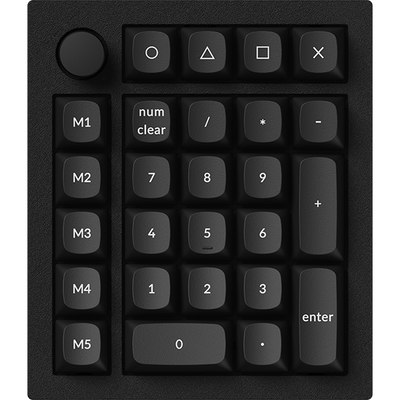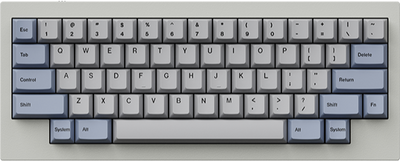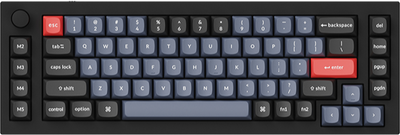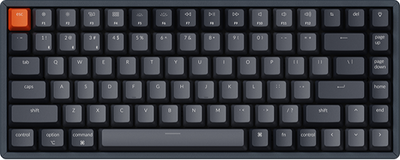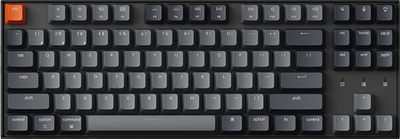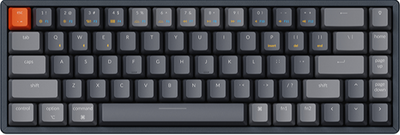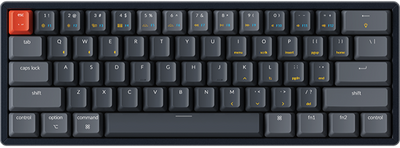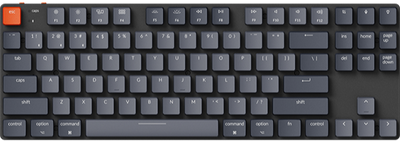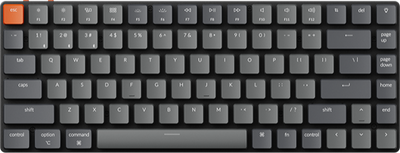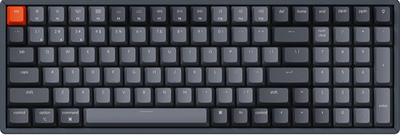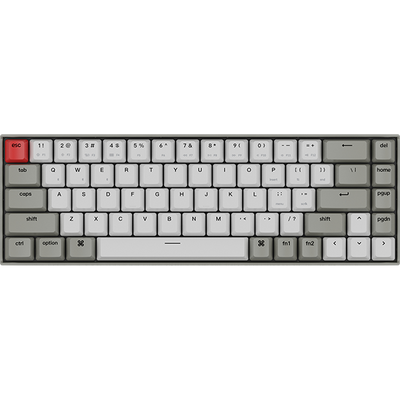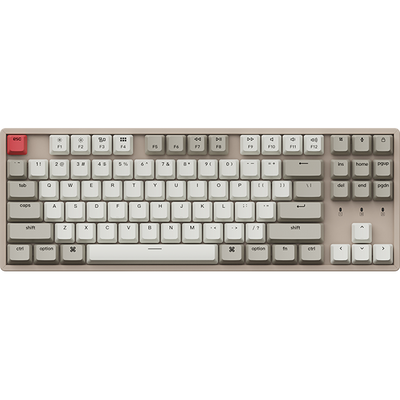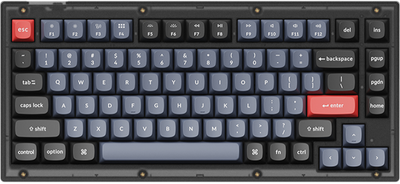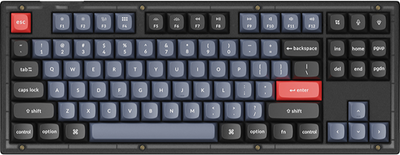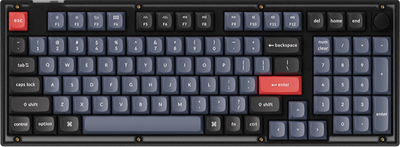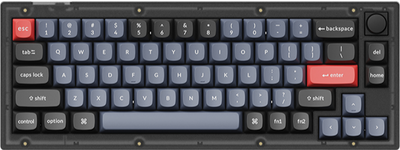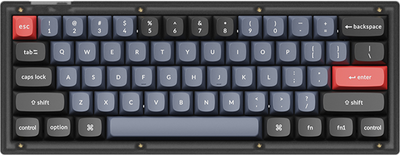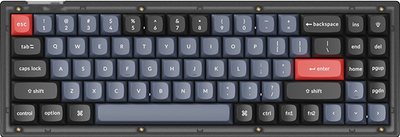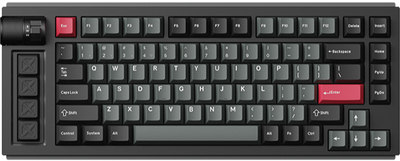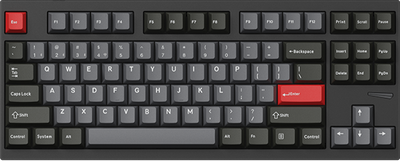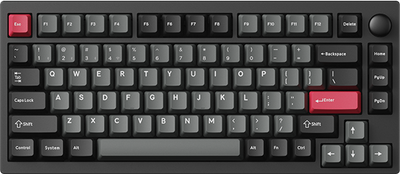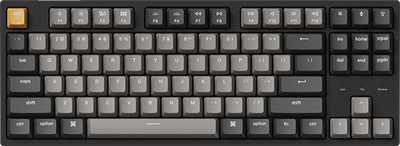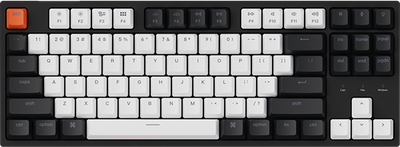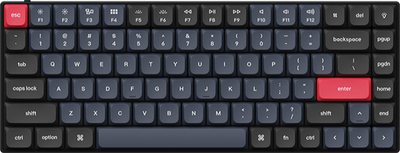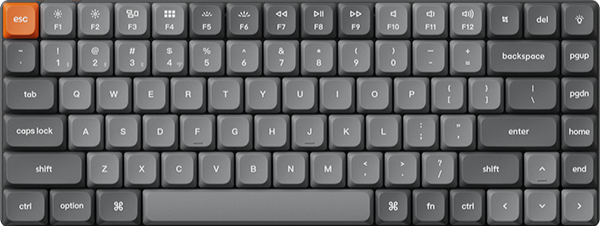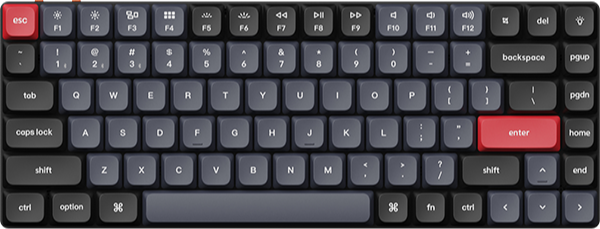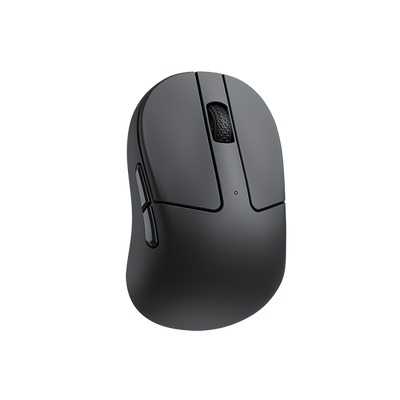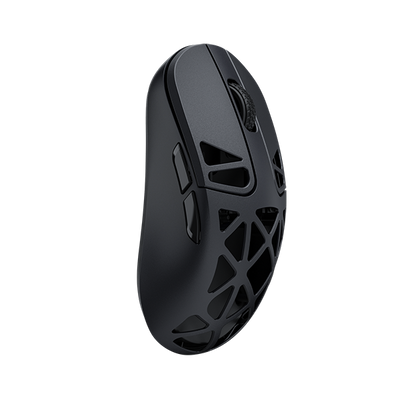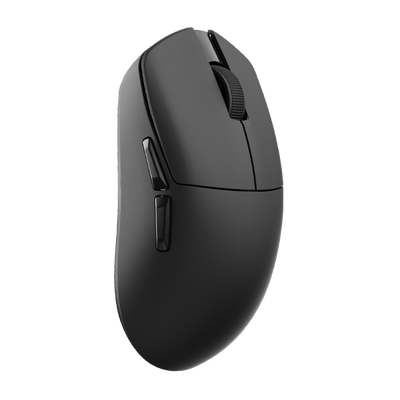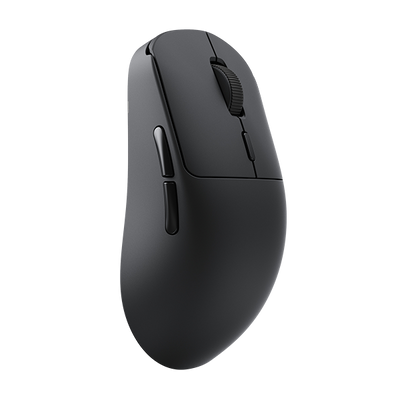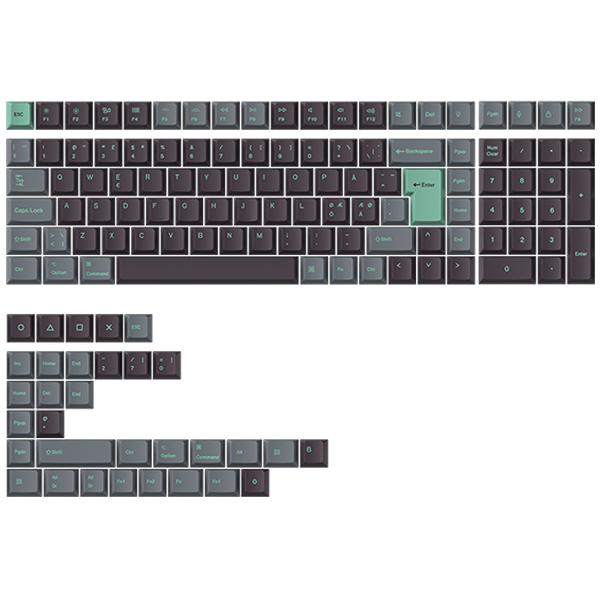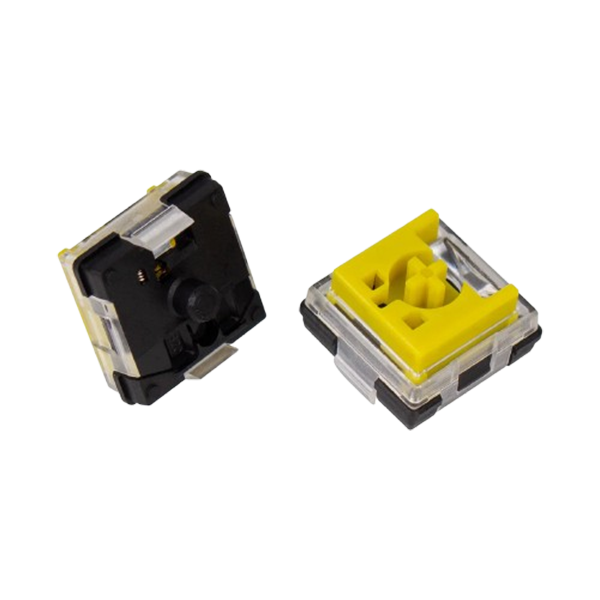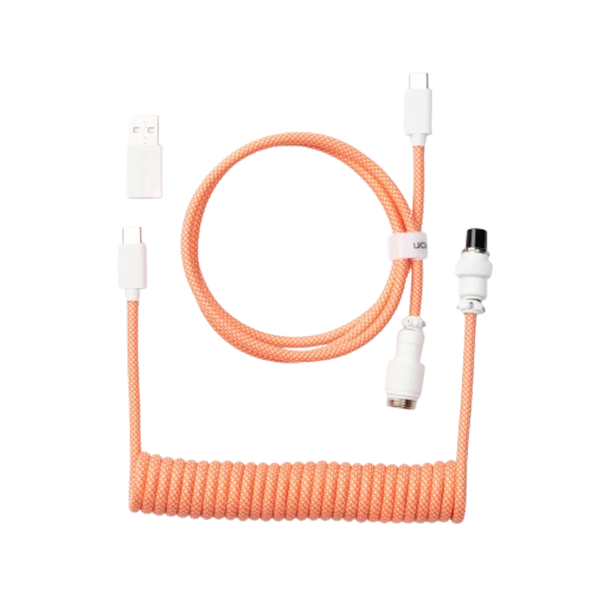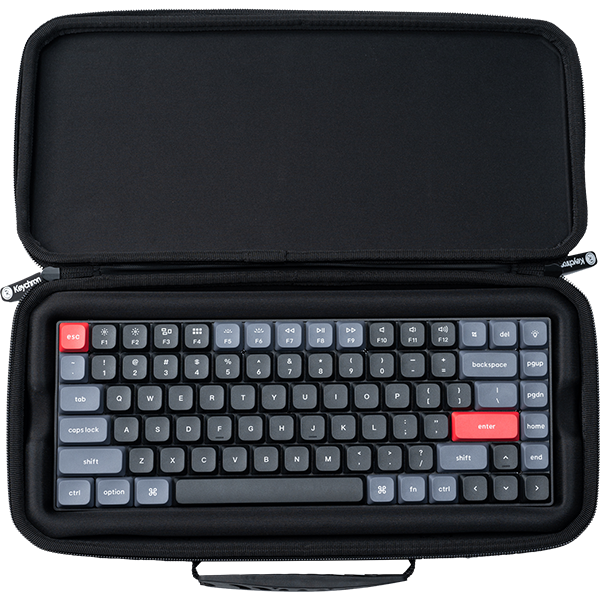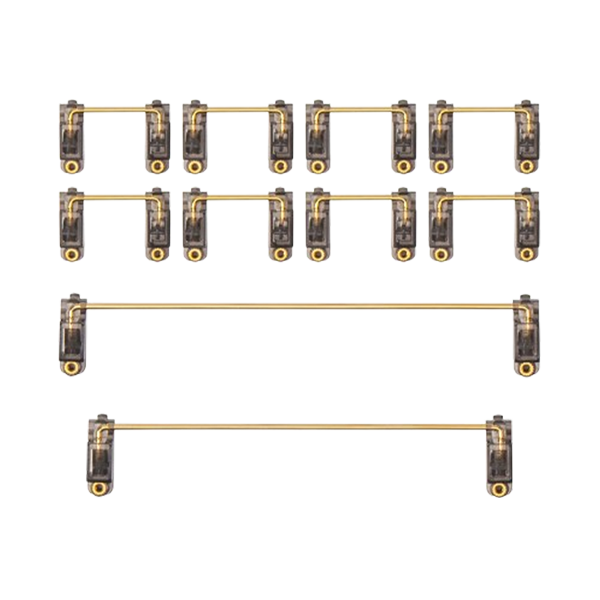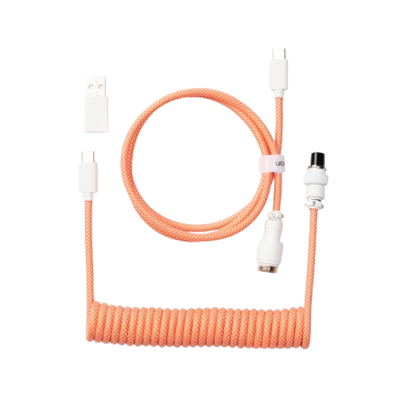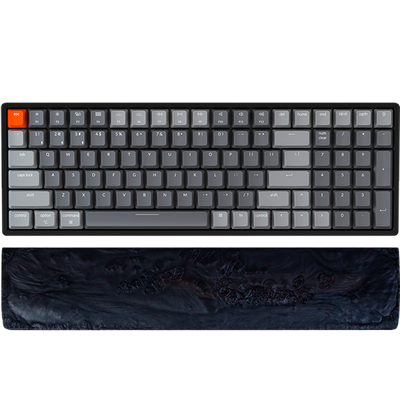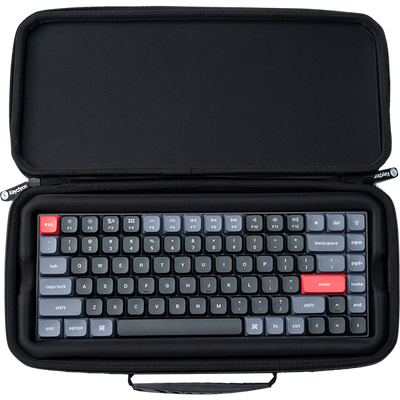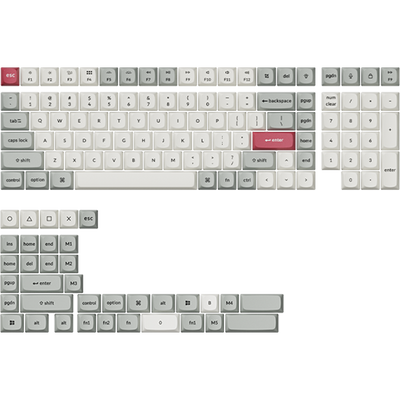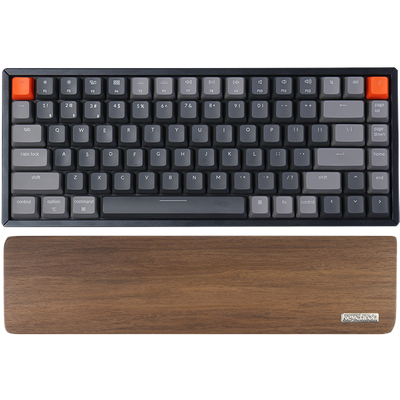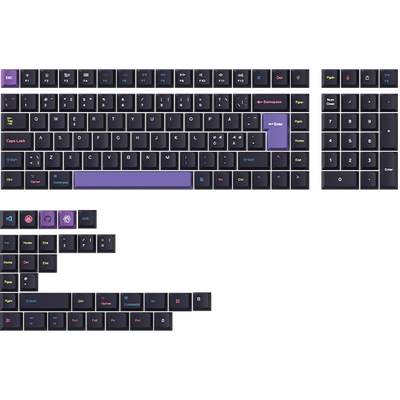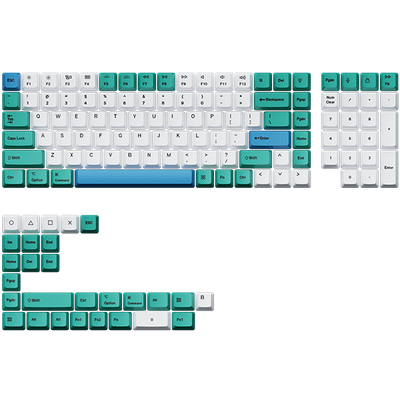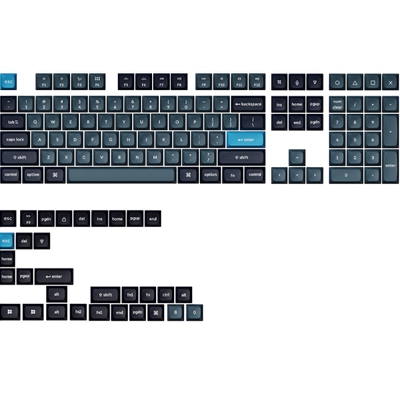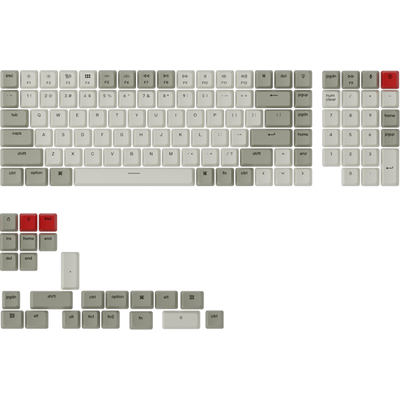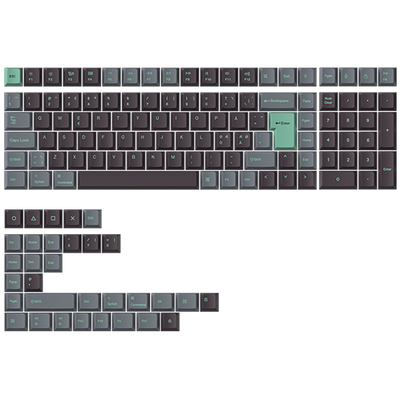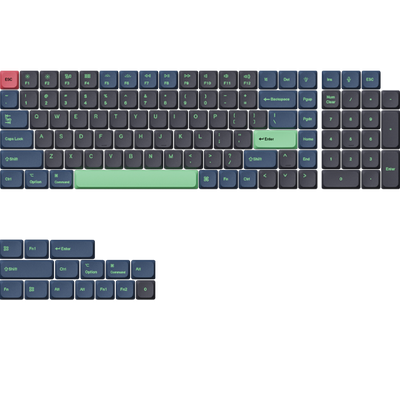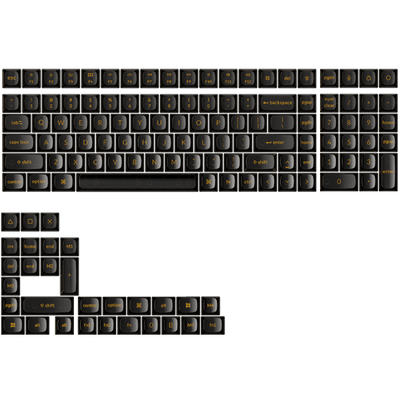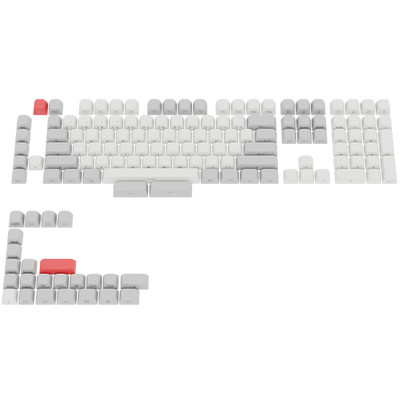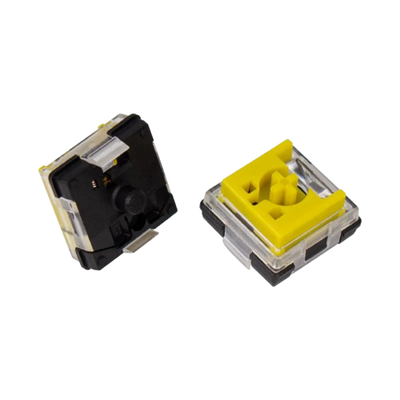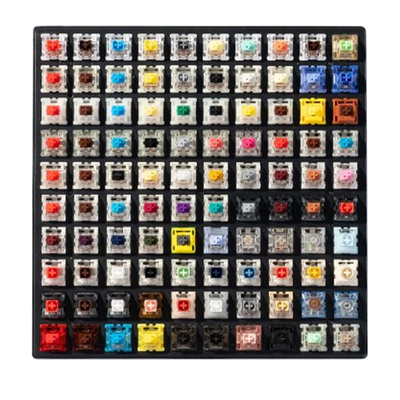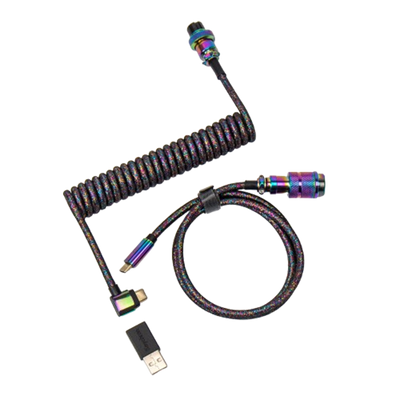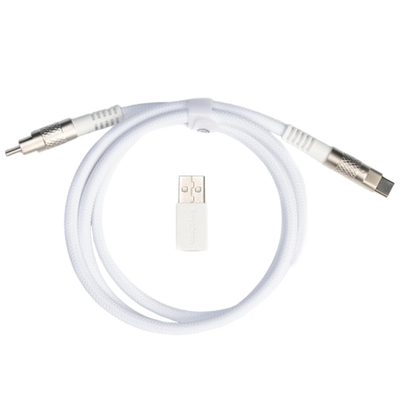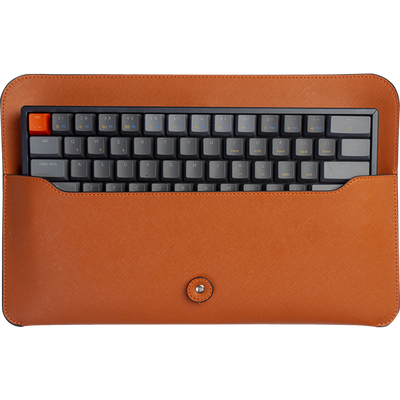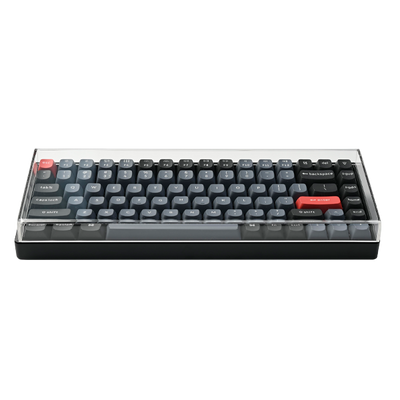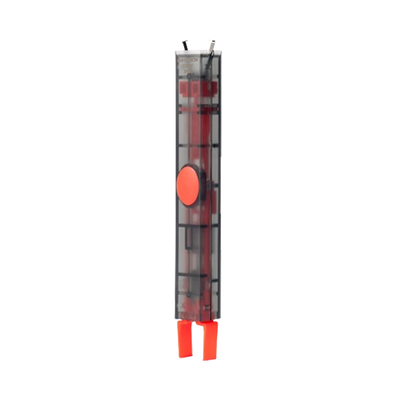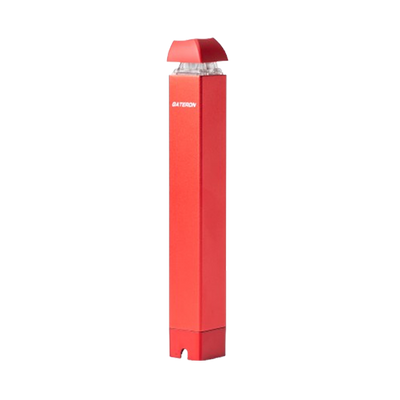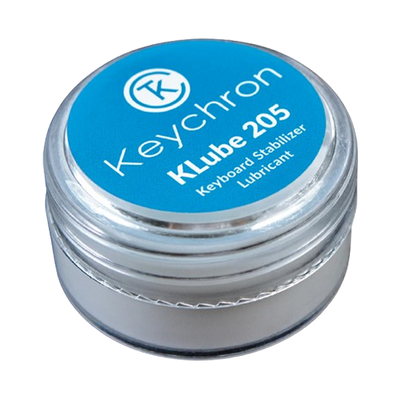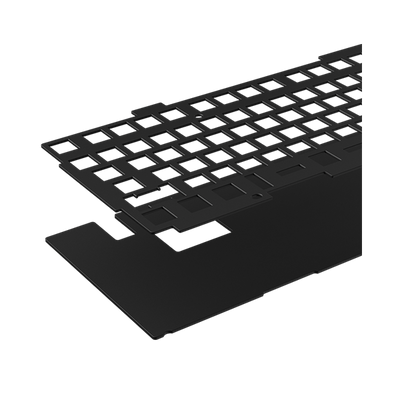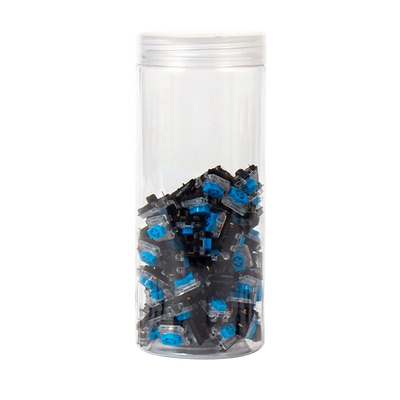The QWERTY keyboard layout is what most of us use every day without thinking about it. Look down at your computer or phone - those first six letters on the top row give this layout its name.
The QWERTY layout was originally designed for mechanical typewriters to prevent jamming when people typed too fast.
Even though we don't use typewriters much anymore, this layout stuck around. It's now the standard keyboard arrangement in most countries that use the Latin alphabet.
You might wonder if this old design is still the best way to type. Some people think other layouts are faster, but QWERTY remains king because so many of us learned to type this way first.
Origin and Meaning of "QWERTY"
The term "QWERTY" comes directly from the first six letters on the top left row of the keyboard: Q, W, E, R, T, and Y. This keyboard layout was created for typewriters in the 1870s by Christopher Latham Sholes.
He designed it to help solve a common problem with early typewriters - the keys would jam when people typed too quickly.
The QWERTY design actually slowed typists down a bit. This prevented the mechanical arms of typewriters from getting stuck together. Even though today's computers don't have this problem, the layout stuck around because people were already used to it.
When you look at your keyboard, you'll notice this arrangement isn't alphabetical. That's on purpose! The layout spreads frequently used letter pairs apart to reduce jamming on old machines.
Standard Keyboard Layout Explained
The standard QWERTY keyboard has several distinct sections:
- Alphanumeric keys: Contains letters, numbers, and basic punctuation
- Function keys: Usually at the top (F1-F12)
- Navigation keys: Arrow keys, Home, End, Page Up/Down
- Numeric keypad: Often on the right side of full-sized keyboards
Your keyboard might have slight differences depending on your region.
The two main versions are ANSI (American) and ISO (European). The ANSI layout has a wider left Shift key and a single-row Enter key. The ISO layout has a taller Enter key and an extra key near the left Shift.
You'll find this QWERTY arrangement on most devices you use daily - computers, laptops, smartphones, and tablets.
Despite many attempts to create more efficient layouts, QWERTY remains dominant because so many people already know how to use it.
How and Why the QWERTY Keyboard Was Invented
The QWERTY keyboard layout has a fascinating history tied to solving mechanical problems rather than optimizing typing speed. It was created by Christopher Latham Sholes and his colleagues in the 1860s.
Transition from Typewriters to Modern Digital Keyboards
Christopher Latham Sholes patented an early typewriter in 1868 with a keyboard that looked like a piano. The original design had a problem - when you typed fast, the metal typebars would jam together.
To fix this issue, Sholes rearranged the keys to put common letter pairs far apart. This clever solution slowed down typing just enough to prevent jams. The QWERTY layout gets its name from the first six letters in the top left row.
The design was sold to E. Remington and Sons in 1874, and the QWERTY layout became standard on their typewriters. People learned to type on these machines, and the layout stuck.
When computers came along, manufacturers kept the QWERTY layout because so many people already knew how to use it. Even though we don't have mechanical parts that jam anymore, you still use this 150-year-old design when you type on your keyboard today!
QWERTY Keyboard Design and Key Arrangement

The QWERTY keyboard gets its name from the first six letters on the top row. This design has remained largely unchanged for over 150 years despite numerous attempts to create more efficient layouts.
Layout Breakdown and Key Positioning
The QWERTY layout arranges letters in a specific pattern across three main rows. The top row starts with QWERTYUIOP, the middle row with ASDFGHJKL, and the bottom row with ZXCVBNM. This arrangement wasn't random—it was designed to reduce typewriter jams by separating commonly used letter pairs.
Look at your keyboard now. You'll notice the home row (ASDFGHJKL) where your fingers rest. Your index fingers sit on F and J, often marked with small bumps to help you position your hands without looking.
Punctuation marks and special characters are placed around the edges. Numbers run across the top, though some compact keyboards place them differently.
Standard vs. Compact QWERTY Keyboards
Standard QWERTY keyboards come in several sizes:
- Full-size: Includes alphanumeric keys, function keys, navigation keys, and a numeric keypad
- TKL (tenkeyless): Removes the numeric keypad
- 75%: Similar to TKL but more compact
- 60%: Eliminates function keys, navigation keys, and numeric keypad
Compact keyboards save desk space but require you to use key combinations for some functions. They're popular for traveling or small workspaces.
The key spacing also differs between models. Standard keyboards typically have 19mm key spacing, while laptop and compact keyboards might have 17-18mm spacing. This makes a big difference in how comfortable typing feels for your fingers.
Some compact keyboards maintain the QWERTY layout while introducing innovative features like split designs or ergonomic shapes to reduce strain on your wrists.
Why QWERTY Keyboards Remain the Standard Today

The QWERTY keyboard layout has maintained its position as the default typing system for almost 150 years despite newer alternatives. This staying power comes from both its historical advantage of early adoption and its practical benefits for everyday typing.
Widespread Adoption
Once the QWERTY layout became standard on typewriters, it created a powerful network effect. As more people learned to type on QWERTY, more machines were made with this layout.
Today, you can find QWERTY on virtually every device with a keyboard. From your laptop to your smartphone's digital keyboard, this layout is everywhere.
This universal adoption means manufacturers stick with what works. Changing keyboard layouts would require retraining millions of users, which is why QWERTY has remained the standard for computers and digital devices.
Typing Efficiency
Contrary to what you might have heard, QWERTY wasn't designed to slow typists down. In fact, the layout was created to speed up typing.
The layout places common letter combinations in positions that let you type quickly with both hands. This arrangement reduces finger travel and helps you maintain a steady rhythm.
Many professional typists can reach speeds of 60-80 words per minute on QWERTY keyboards. Some champions even exceed 120 WPM!
While alternative layouts like Dvorak claim to be more efficient, studies show mixed results. The efficiency gap isn't big enough for most people to justify relearning how to type.
Your muscle memory with QWERTY is valuable. After using this layout for years, your fingers automatically know where to go, making it tough to switch to something new.
QWERTY vs. Alternative Keyboard Layouts
Many keyboard users are unaware that alternatives to the standard QWERTY layout exist. These options promise better comfort and typing efficiency.
Comparing QWERTY with Dvorak, Colemak, and Other Options
QWERTY is the most common keyboard layout, named for its first six keys. It was designed in the 1870s for typewriters, not for typing comfort or speed.
Alternative layouts aim to make typing more comfortable and faster.
The Dvorak layout places vowels in the left-hand home row and common consonants on the right. This design reduces finger movement by putting the most-used letters in easy-to-reach spots.
About 70% of typing happens on the home row with Dvorak, compared to just 30% with QWERTY.
Colemak changes fewer keys from QWERTY (only 17 keys are different). It keeps common keyboard shortcuts in the same places, making it easier to learn than Dvorak.
Colemak puts 74% of typing on the home row.
Other options include:
- Workman: Focuses on reducing sideways finger movements
- QGMLWY: Optimized for English typing
- Colemak-DH: A modified Colemak with better hand position
Pros and Cons of Switching from QWERTY
Pros of switching:
- Less finger movement means less strain on your hands
- Potentially faster typing speeds after adjustment
- Reduced risk of repetitive strain injury
- More balanced use of both hands
Cons of switching:
- Steep learning curve that can temporarily slow your typing
- You'll need to relearn muscle memory completely
- Most public computers only have QWERTY layouts
- You might need to switch back and forth between layouts
The adjustment period is challenging. Your typing speed will drop dramatically at first. Most people need 1-3 months of regular practice to reach their previous QWERTY speed on a new layout.
If you decide to switch, start with typing tutors designed for your chosen layout. Many users find the Colemak layout offers a good balance between improved efficiency and ease of learning.
International QWERTY Keyboard Variations
The standard QWERTY layout changes across different countries and languages to meet local needs. These adaptations maintain the basic QWERTY structure while accommodating special characters and language requirements.
Different Language Adaptations
QWERTY keyboards vary widely across languages and regions. The QWERTY keyboard keeps its name from the first six letters on the top row, but many countries modify it for their languages.
French-speaking countries often use the AZERTY layout, which swaps several keys from the standard QWERTY.
You'll notice the A and Q positions are switched, and numbers require using the Shift key.
Spanish keyboards include the ñ character, while Nordic countries add their special characters like å, ä, and ö. You can identify these by the extra keys or modified symbols.
UK QWERTY keyboards differ from US versions with a different £ symbol placement and a taller Enter key shape.
Regional Modifications While Maintaining QWERTY Base
Countries maintain the basic QWERTY arrangement while adding region-specific features. The Dutch QWERTY-NL keyboard differs slightly from the international version but keeps the same basic layout.
German-speaking regions use QWERTZ layouts, swapping only the Y and Z keys because Z appears more frequently in German. This small change makes typing more efficient for German speakers.
You'll find that many East European keyboards include additional letters with diacritical marks. These are placed logically to maintain typing flow.
Canadian French keyboards offer a compromise between QWERTY and AZERTY with a unique layout that lets you type in both English and French.
Asian countries using Latin script often add phonetic typing systems while keeping the QWERTY base for global compatibility.
QWERTY Keyboard Shortcuts That Save Time

Keyboard shortcuts can save you several hours each year by reducing repetitive mouse movements and clicks. These commands work with the standard QWERTY layout that most computers use.
Essential Shortcuts Everyone Should Know
The most basic shortcuts work with the Ctrl key held down while pressing another key.
- You can copy text with Ctrl+C and paste it with Ctrl+V.
- Select all text on a page or in a document with Ctrl+A.
- To save your work quickly, press Ctrl+S. This habit can prevent losing hours of effort if your computer crashes.
- Want to print? Try Ctrl+P instead of searching through menus.
- For undoing mistakes, Ctrl+Z is your best friend, while Ctrl+Y redoes actions you've undone.
Browser shortcuts help too.
- Press Ctrl+T to open a new tab and Ctrl+W to close the current one.
- Jump to your address bar instantly with Alt+D or Ctrl+L.
Productivity Hacks for QWERTY Users
Some apps let you use QWERTY shortcuts even if you've switched to another keyboard layout. This helps when you don't want to relearn all your shortcuts. Window management shortcuts boost your efficiency.
Alt+Tab switches between open programs, while Windows+Arrow Keys snaps windows to different parts of your screen.
Try these text editing tricks:
- Ctrl+Home/End: Jump to document start/end
- Shift+Arrow Keys: Select text as you move
- Ctrl+Backspace: Delete entire words at once
For faster searching, use Ctrl+F to find text on any page.
When browsing, F5 refreshes the current page, and Ctrl+D bookmarks it.
You can take screenshots with Windows+Shift+S or PrtScn. This captures images without needing special apps.
How to Type Faster on a QWERTY Keyboard
Improving your typing speed on a QWERTY keyboard requires both proper technique and consistent practice. The right methods can help you boost your words per minute (WPM) significantly without changing your keyboard layout.
Touch Typing Techniques
Touch typing is the foundation of fast typing. This means using all fingers without looking at the keyboard.
Place your fingers on the home row (ASDF for left hand, JKL; for right hand) as your starting position.
Each finger is responsible for specific keys:
- Left hand: pinky (A, Q, Z), ring (S, W, X), middle (D, E, C), index (F, R, V, B, G, T)
- Right hand: index (J, U, M, N, H, Y), middle (K, I, comma), ring (L, O, period), pinky (semicolon, P, slash)
Your thumbs should hover over the spacebar.
One key to faster typing is mastering common digraphs - letter combinations that appear frequently in words. Try to develop muscle memory for these combinations.
To practice proper finger placement, use a touch typing tutor that guides you through exercises.
Speed Improvement Strategies
Start by measuring your current typing speed using online tests. This gives you a baseline to track improvement. Aim to increase your WPM gradually.
Daily practice is crucial.
Set aside 15-20 minutes each day for focused typing exercises. Focus on accuracy first, then speed will follow naturally.
Try these specific strategies:
- Learn keyboard shortcuts to reduce mouse use
- Practice with common words and phrases
- Type song lyrics or articles that interest you
- Use online typing games to make practice fun
Proper posture matters too!
Sit with your back straight, feet flat on the floor, and keep your wrists slightly elevated. Bad posture causes fatigue and slows you down.
Challenge yourself with typing speed tests that include numbers and special characters. Most people type these slower than letters.
QWERTY Keyboards for Specific Uses

QWERTY keyboards come in various designs tailored for different purposes. These specialized versions maintain the familiar layout while adding features that enhance performance for specific activities.
Gaming QWERTY Keyboards
Gaming keyboards keep the standard QWERTY layout but add features gamers need.
Many gaming keyboards have RGB lighting that you can customize to match your setup or help you find keys in the dark.
Key features include:
- N-key rollover - lets you press multiple keys at once
- Programmable macro keys - create shortcuts for complex commands
- Anti-ghosting technology - ensures all keypresses register during intense gameplay
Response time matters in competitive gaming. Many models offer 1ms response rates so your commands happen instantly.
You'll also find gaming keyboards with dedicated media controls and volume wheels. Some high-end models include wrist rests to reduce strain during long gaming sessions.
Ergonomic QWERTY Keyboard Options
Ergonomic keyboards maintain the QWERTY layout while reducing strain on your hands and wrists.
These keyboards often split the layout into two sections that match the natural position of your hands.
Common ergonomic features include:
- Split designs - separate sections for left and right hands
- Curved key arrangements - follow the natural arc of your fingers
- Tented layouts - angle keys upward from the center
Many users who experience wrist pain find relief with these designs.
Some ergonomic keyboards also offer programmable keys and adjustable legs to customize your typing angle.
Mechanical QWERTY Keyboards
Mechanical keyboards use individual switches under each key instead of the rubber domes found in standard keyboards. They maintain the QWERTY layout but provide a better typing experience.
Different switch types offer unique sensations:
- Blue switches - clicky and loud, great for typing
- Red switches - smooth and quiet, popular for gaming
- Brown switches - tactile bump without loud click, good all-around
You can choose keycap materials like PBT plastic for durability or ABS for cost-effectiveness.
Many mechanical keyboards let you remove and replace keycaps to customize your look.
Mechanical keyboards typically last much longer than membrane keyboards. Many can handle 50-100 million keypresses per key. Though more expensive initially, their durability and typing feel make them worth considering for daily use.
Virtual QWERTY Keyboards on Mobile Devices
Virtual keyboards have transformed how we type on touchscreen devices. They offer flexibility while maintaining the familiar QWERTY layout most people learned on physical keyboards.
Smartphone and Tablet Implementations
Most smartphones and tablets come with virtual QWERTY keyboards as their default input method.
These keyboards appear when you tap a text field and disappear when not needed, saving screen space.
Android and iOS devices handle virtual keyboards differently. Android gives you more choices for keyboard apps. iOS keeps things simpler but still lets you make basic changes.
The standard layout shows all letters in QWERTY format, with numbers and special characters available through secondary menus. Many keyboards include predictive text that guesses your next word.
Some advanced virtual keyboards offer features like:
- Swipe typing (drag your finger across letters)
- Voice-to-text input
- Emoji suggestions
- Auto-correction
Projection keyboards are another option. These devices project a keyboard image onto a flat surface, letting you type without a physical keyboard.
Customizing Your Virtual QWERTY Experience
You can change how your virtual keyboard works and looks. Most devices let you adjust key size, sound effects, and vibration feedback.
Many keyboard apps offer themes to change colors and styles. Some even let you use your own photos as backgrounds.
For comfort, you can try:
- Split keyboard layouts for thumb typing
- One-handed modes that shrink and move the keyboard
- Adjusting key height for easier typing
If you have specific needs, look for keyboards with special features like text shortcuts or specialized layouts. Some keyboards remember how you type and adjust to your style.
You might also want to try keyboards with built-in translation or ones that support multiple languages. These let you switch languages with a simple tap.
Conclusion
The QWERTY keyboard layout has demonstrated remarkable staying power despite its mechanical typewriter origins.
While alternatives like Dvorak offer theoretical efficiency gains, QWERTY's widespread adoption and our collective muscle memory have secured its dominance. This familiar arrangement bridges human thought and digital communication for everyone from casual users to professional typists.
Ready to experience QWERTY at its most impressive? Explore our collection of vibrant RGB keyboards and high-performance gaming keyboards and mice that combine this classic layout with customizable lighting effects, responsive switches, and precision controls designed to elevate both your gaming experience and everyday computing.
Frequently Asked Questions
How do QWERTY keyboard layouts vary by country?
QWERTY keyboards differ across countries to accommodate language-specific characters and typing needs.
In the UK layout, you'll find the @ symbol on the 2 key, while US keyboards place it on the key with the number 2.
German QWERTY variants (sometimes called QWERTZ) swap the Y and Z positions because Z is more common in German. Nordic countries add extra keys for letters like Å, Ø, and Æ.
Japanese QWERTY keyboards maintain the basic English letter arrangement but include additional keys for inputting Japanese characters.
What are the advantages of the QWERTY layout compared to other keyboard layouts?
The main advantage of QWERTY is its widespread adoption and familiarity. Most people learn to type on QWERTY keyboards, making it the standard in schools, workplaces, and public settings.
QWERTY layouts are available on virtually all devices, from phones to computers. This universal availability means you don't need to relearn typing when switching between devices.
The layout was originally designed to prevent typewriter jams by placing commonly used letter pairs farther apart, which now translates to comfortable typing for most users.
Why do some users prefer the Dvorak keyboard layout over QWERTY?
Some typists choose Dvorak because it places the most frequently used letters on the home row.
This design allows you to type about 70% of words without leaving the home row, compared to only 32% on QWERTY.
Dvorak supporters claim it reduces finger movement and fatigue during typing. This can be particularly helpful if you have repetitive strain injuries or type for long periods.
The layout is also designed to alternate between hands more frequently than QWERTY, potentially enabling faster typing speeds once you master it.
What are the key differences between QWERTY and AZERTY keyboard layouts?
AZERTY, used primarily in France and some other French-speaking countries, swaps the A and Q keys, as well as the Z and W keys compared to QWERTY. This arrangement better accommodates French language typing patterns.
AZERTY layouts position numbers on the top row as secondary characters that require pressing the Shift key. Special characters like é, è, and ç are given dedicated keys for easy access when typing French.
The M key on AZERTY is positioned differently than on QWERTY, appearing on the right side of the keyboard rather than in the bottom row.
How can one efficiently switch from a different keyboard layout to QWERTY?
Start by using a typing tutor program that focuses specifically on QWERTY layout. These programs guide you through exercises that build muscle memory gradually.
Cover your keyboard with QWERTY keycaps or overlays if you're switching from another physical layout. This forces you to look at the screen instead of your fingers, helping you learn touch typing faster.
Practice daily for short periods rather than occasional long sessions. Consistent 15-minute daily practice is more effective than a single two-hour session once a week for building lasting muscle memory.


